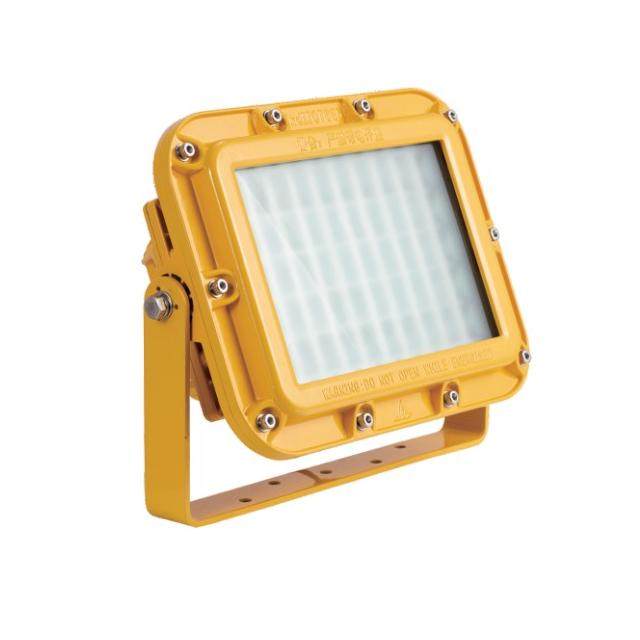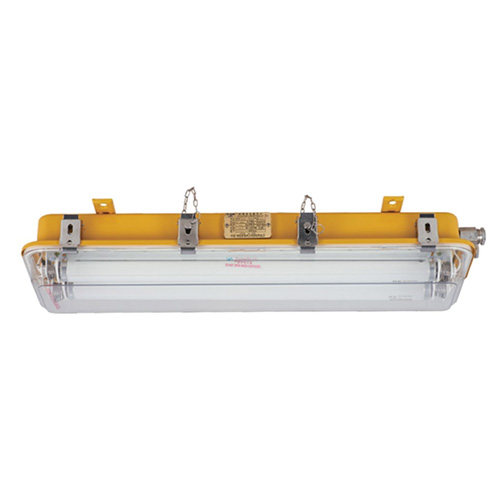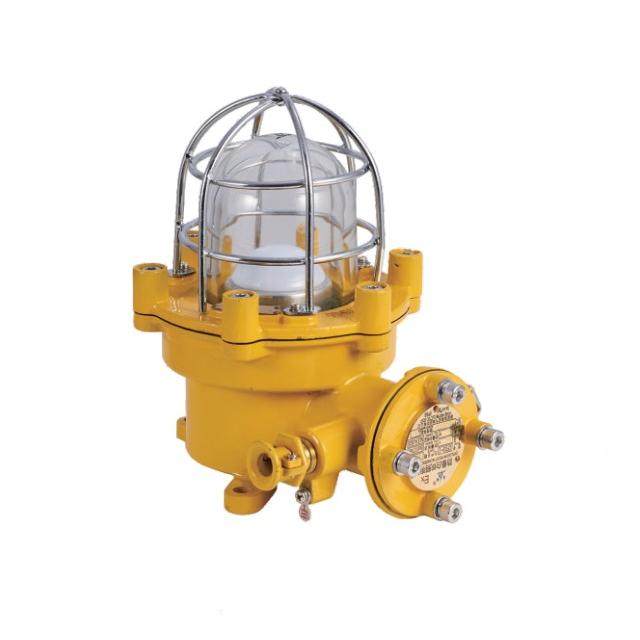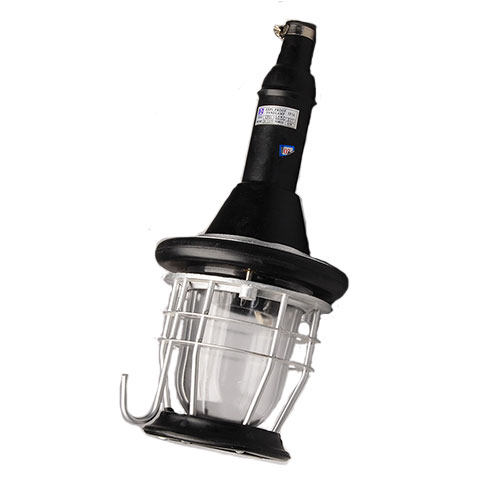How to Retrofit Existing Explosion-proof Lighting in Marine Environments
The marine industry demands high standards for equipment, particularly in hazardous areas like offshore platforms, tankers, and refineries where the risk of explosions is prevalent due to the presence of flammable gases, vapors, and dust. The goal of retrofitting explosion-proof lighting is to upgrade older lighting technology to meet current safety standards, improving energy efficiency and reducing maintenance costs.

Understanding Explosion-proof Lighting
Explosion-proof lighting is a specialized type of lighting designed to operate safely in hazardous environments. These lights are constructed to prevent any internal sparks or heat from igniting the surrounding explosive atmosphere. Explosion-proof lighting fixtures are sealed and built with durable materials to withstand extreme conditions, making them essential for industries such as marine, oil and gas, mining, and chemical processing, where safety is a critical concern.
The Importance of Retrofitting Existing Marine Explosion-Proof Lighting
This chart highlights the critical reasons for retrofitting explosion-proof lighting in marine environments, emphasizing the benefits in safety, efficiency, and compliance.
| Factor | Explanation |
| 1. Improved Safety | Upgrading lighting systems ensures they meet current safety standards, reducing the risk of explosions in hazardous areas. |
| 2. Energy Efficiency | Retrofitting with energy-efficient LED lights significantly lowers energy consumption, cutting operational costs. |
| 3. Enhanced Durability | Modern explosion-proof lights are designed to withstand harsh marine environments, increasing lifespan and reducing maintenance. |
| 4. Regulatory Compliance | Ensures lighting systems are compliant with international standards (ATEX, IECEx), protecting against legal penalties and safety risks. |
| 5. Reduced Maintenance Costs | Long-lasting LED lights reduce the need for frequent replacements, minimizing downtime and maintenance expenses. |
| 6. Environmental Sustainability | Energy-efficient lights lower the carbon footprint of the vessel, aligning with sustainability goals in the maritime industry. |
| 7. Better Operational Efficiency | Advanced lighting technologies provide better illumination and can be integrated with smart systems for improved control. |
| 8. Future-Proofing | Retrofitting allows the system to be adaptable to future regulatory updates and technology advancements. |
| 9. Increased Visibility and Illumination | Optimizing lighting placement and brightness enhances crew safety and operational efficiency in key areas of the vessel. |

Strategies for Retrofitting Existing Explosion-Proof Lighting in Marine Environments
1. Conducting a Thorough Risk Assessment
Before any retrofitting project begins, it is crucial to perform a comprehensive risk assessment of the vessel or offshore facility. This involves identifying potential explosion hazards, existing lighting performance, and determining whether the current explosion-proof lighting meets modern standards, such as those set by the IECEx or ATEX directives.
Key questions to address include:
- Are the current lights capable of withstanding the environment?
- How is the lighting affected by temperature, humidity, and corrosive elements?
- Are there areas where lighting is insufficient or prone to failure?
A clear understanding of these factors helps tailor the retrofit project to ensure maximum safety and reliability.
2. Selecting Energy-Efficient LED Lighting Solutions
One of the most effective retrofitting strategies is to replace outdated lighting with energy-efficient LED explosion-proof lights.
LEDs have a number of advantages:
- Energy Savings: LED marine lights consume significantly less energy compared to traditional incandescent or fluorescent lights.
- Longer Lifespan: LEDs typically have a lifespan of 50,000 to 100,000 hours, which reduces the need for frequent replacements and cuts maintenance costs.
- Improved Luminous Efficacy: LED lights provide better brightness and color rendering, improving visibility in critical areas while using less power.
Marine-specific LED fixtures are also designed to handle the rigors of a harsh maritime environment, including exposure to saltwater, extreme temperatures, and vibrations.

3. Ensuring Compliance with Explosion-Proof Standards
Any retrofit must ensure that the new lighting systems comply with international explosion-proof standards. Depending on the region, this could mean meeting ATEX (Europe), IECEx (global), or UL (North America) requirements. Compliance ensures the lighting system is designed to prevent ignition of explosive atmospheres and withstand harsh environmental conditions.
The selected fixtures should be classified for the specific gas groups and temperature classes of the area in which they will be installed. This step is critical to ensure not only safety but also legal compliance in hazardous marine environments.
4. Upgrading Electrical Infrastructure
When retrofitting explosion-proof lighting, it is also essential to evaluate and potentially upgrade the electrical infrastructure. Older systems may not have the capacity or robustness to support modern lighting technologies. This includes examining:
- Wiring and Cabling: Old or damaged cables may need to be replaced with marine-grade, corrosion-resistant materials.
- Control Systems: Upgrading to digital control systems can offer features like dimming, remote control, and the ability to integrate with existing vessel monitoring systems.
- Power Distribution: Modifying power supplies to accommodate energy-efficient LED fixtures can maximize the benefits of the retrofit.
5. Integration of Smart Lighting Technologies
A more advanced strategy involves integrating smart lighting technologies into the retrofitted explosion- proof lighting system. Smart lighting offers real-time monitoring, remote control, and adaptive lighting, which automatically adjusts to the vessel’s needs based on occupancy, time of day, or weather conditions. These technologies also provide data on energy consumption and system performance, allowing for predictive maintenance.
For instance, integrating lighting into a vessel’s central control system can provide crew members with quick access to monitor or adjust lighting from a single location, enhancing operational efficiency and safety.
6. Consideration of Modular Lighting Designs
Another retrofitting strategy is to adopt modular lighting designs. Modular explosion-proof lights are composed of separate components that can be easily replaced or upgraded without needing to overhaul the entire fixture. This flexibility simplifies future maintenance and allows for quick adaptation to changing regulatory standards or technological advancements.
7. Optimizing Lighting Placement for Better Illumination
In many retrofitting projects, simply upgrading the light fixtures isn’t enough. Optimizing the placement of the lighting to improve visibility in key areas is equally important. This might involve adjusting the location of lights to eliminate blind spots, increasing illumination in critical areas like the deck or engine room, and minimizing glare that could hinder operations. Modern LED fixtures often allow for more precise light distribution, reducing energy waste and improving operational safety.
8. Implementing Corrosion-Resistant Materials
Marine environments are highly corrosive due to the presence of saltwater and humidity, so it is important to choose lighting fixtures made from corrosion-resistant materials such as stainless steel or marine-grade aluminum. These materials ensure longevity and reduce the frequency of maintenance, ultimately lowering costs in the long term.
9. Training and Maintenance Protocols
The success of retrofitting explosion-proof lighting goes beyond installation. Crew members should be trained in the maintenance and proper operation of the new lighting system. Developing maintenance protocols that focus on regular inspections, cleaning, and repairs ensures the system continues to operate safely and efficiently over time.

By following these strategies, marine operators can achieve optimal explosion-proof lighting performance, enhancing safety, and reducing operational costs. The right retrofit strategy will ultimately depend on the specific needs of the vessel and the environmental challenges it faces.

